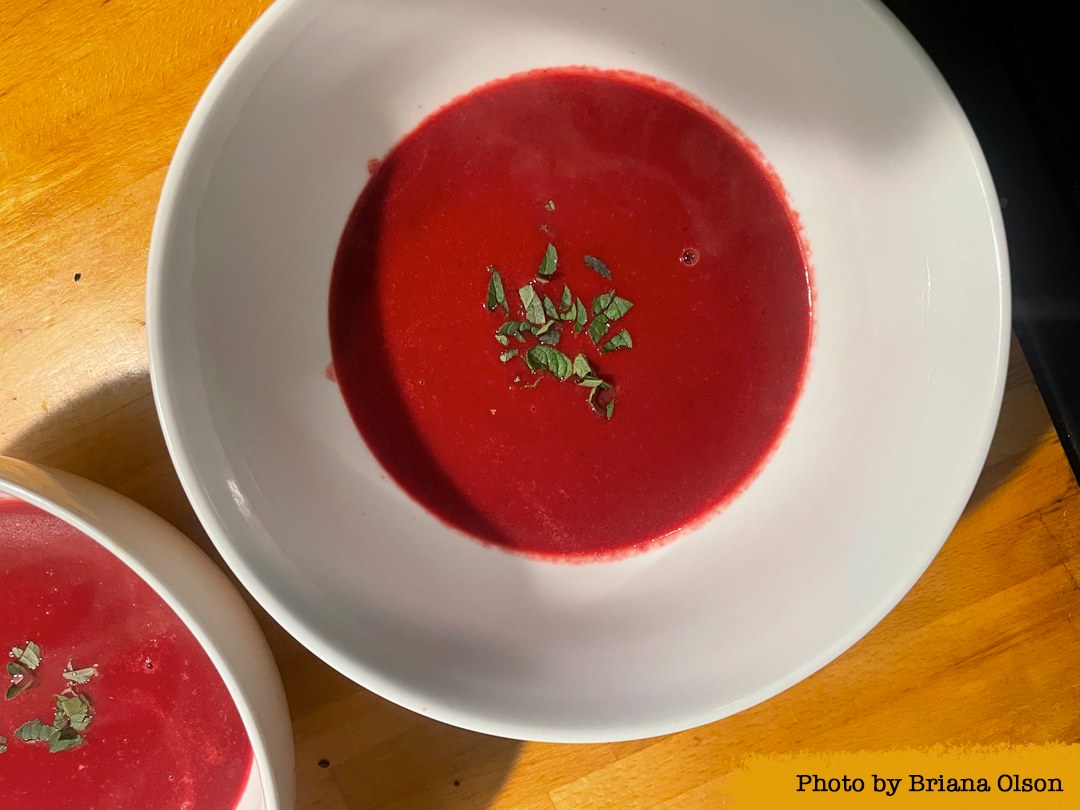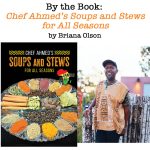Chef Ahmed’s Soups and Stews for All Seasons
by Ahmed M. Obo
There are those who like eating at Jambo Cafe, and then there are those who speak of the Santa Fe restaurant with a thrill and reverence that approaches incantation. My father was one of the latter. And aside from the food itself, I have great appreciation for the way their crew has introduced dozens, hundreds, maybe thousands of people—many of whom were likely raised with an exceedingly simplified notion of the African continent (where, for the record, more than a thousand languages are spoken)—to the flavors of pan-African cuisine. Which is to say: I may not be the most impartial reviewer of Chef Ahmed Obo’s newest cookbook.
Slender but not insubstantial, Soups and Stews for All Seasons focuses, aptly, on the soup/stew spectrum—categories, like most, whose murky, contested edges only become more fluid if you start to consider the multitude of words translated or otherwise corralled by either term. But as the straightforwardness of the title would also suggest, Obo is less concerned with qualifying his selections than with providing clear formulas for reproducing them. Likewise, while not deliberating at length on the interplay of centuries of culinary exchange, each and every recipe in his book evidences just that. In short, this is a cookbook that exemplifies that classic adage of writing workshops: Show, don’t tell.

Much as the menu at Jambo Cafe stretches beyond the chef’s native coastal Kenya, drawing from the cuisines of Ethiopia, Morocco, Jamaica, and more, Soups and Stews does not restrict its influences to Africa or even the Caribbean. Along with ras el hanout goat stew and sega wat, there are Thai-inspired curries and soups that wouldn’t be out of place in a French cookbook. Yet a closer look at the recipe for something that sounds decidedly European, like roasted asparagus soup, reveals the inclusion of not just lemon and parsley but za’atar, cayenne, tahini, and coconut milk. Indeed, wherever a French-trained chef might reach for heavy cream, Obo goes for coconut milk instead. The result—in addition to a cookbook that is friendly to vegans as well as vegetarians—is often a soup with the textural richness of a bisque but without the heaviness of dairy.
Liquid aside, what truly binds this compilation is hinted at by a section nestled slyly between the chapters devoted to fall and winter: “Spices & Spice Blends.” From berbere to chermoula, pili pili to yellow curry, these recipes offer an accessible introduction to making your own spice blends—whether to use in Obo’s stunning Leftover Turkey Soup with Yellow Curry or in a dish of your own devising. Not every recipe in Soups and Stews calls for a heavy dose of spices, but aromatics are key; the compilation comes off as a casual master class in the layering of flavors. And if aromatics are sometimes used prodigiously, as in the ginger and beet bisque calling for six tablespoons of ginger and a combined four tablespoons of curry, coriander, and cumin, they come together in a way that is incredibly lively and unified—bold, yes, but orchestrated by a chef who clearly has the magic touch and intuition known in Mexico as sazón.
If you’re seeking recipes for to-the-letter classics, or if you grew the world’s most perfect pumpkin and want to make a soup that tastes only and precisely of pumpkin, this might not be the cookbook for you. If you want a treatise on the origins of bisque or an instruction manual on broth, this is not that. But if you’ve ever struggled to conjure flavor from lentils, oxtails, or any broth-based dish, Soups and Stews will show you how—sometimes in the matter of an hour. Just don’t mistake that thirty cloves of garlic or whole tablespoon of paprika for a typo.
Who’s Your Source?
The recipes in Soups and Stews rarely, if ever, call for obscure ingredients, and the book includes a source guide of its own that offers some broad suggestions—including encouragement to shop local. That said, not all spices are equal; while you can get away with using run-of-the-mill supermarket brands for these recipes, the results will be better if your spices are fresh.
Jambo Cafe sells spices and some house-made spice blends through their bazaar.
Also in Santa Fe, Savory Spice Shop offers the opportunity to explore the many varieties of paprika or black peppercorns in person.
For affordable spices in larger quantities in Albuquerque, try Bombay Spice or Alquds Mediterranean Grill & Grocery.
And if you’re seeking to shop online for sustainably sourced, high-quality spices, Burlap & Barrel and Diaspora Co. are two options that we at The Bite have tested; let us know if there’s another one that you rely on!

Briana Olson
Briana Olson is a writer and the editor of edible New Mexico and The Bite. She lives in Albuquerque.








